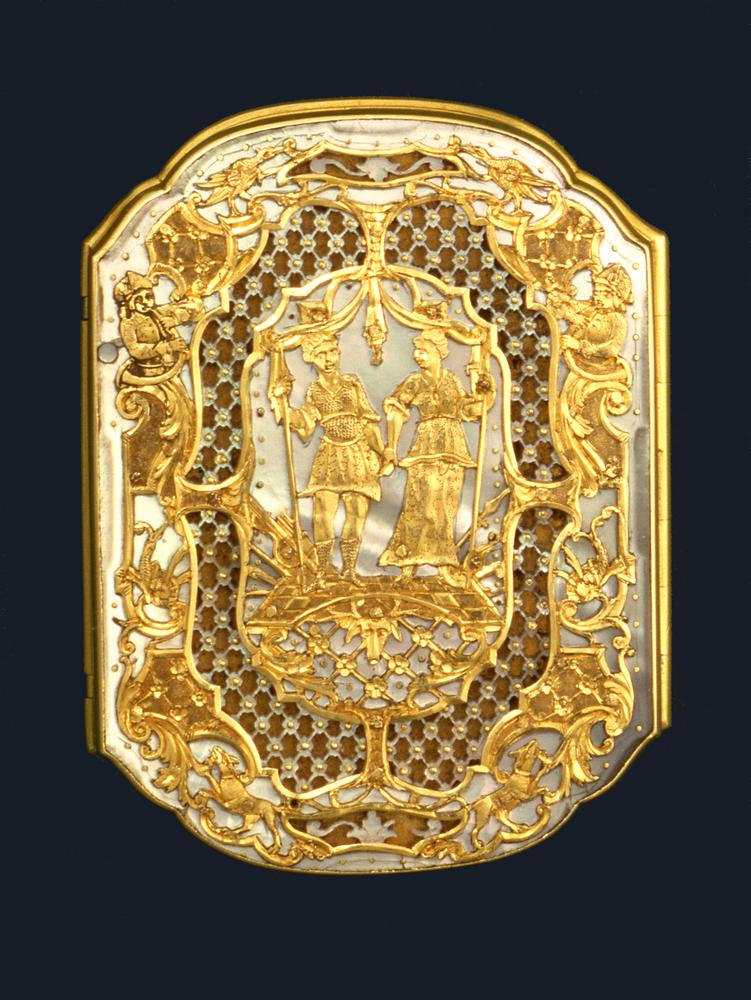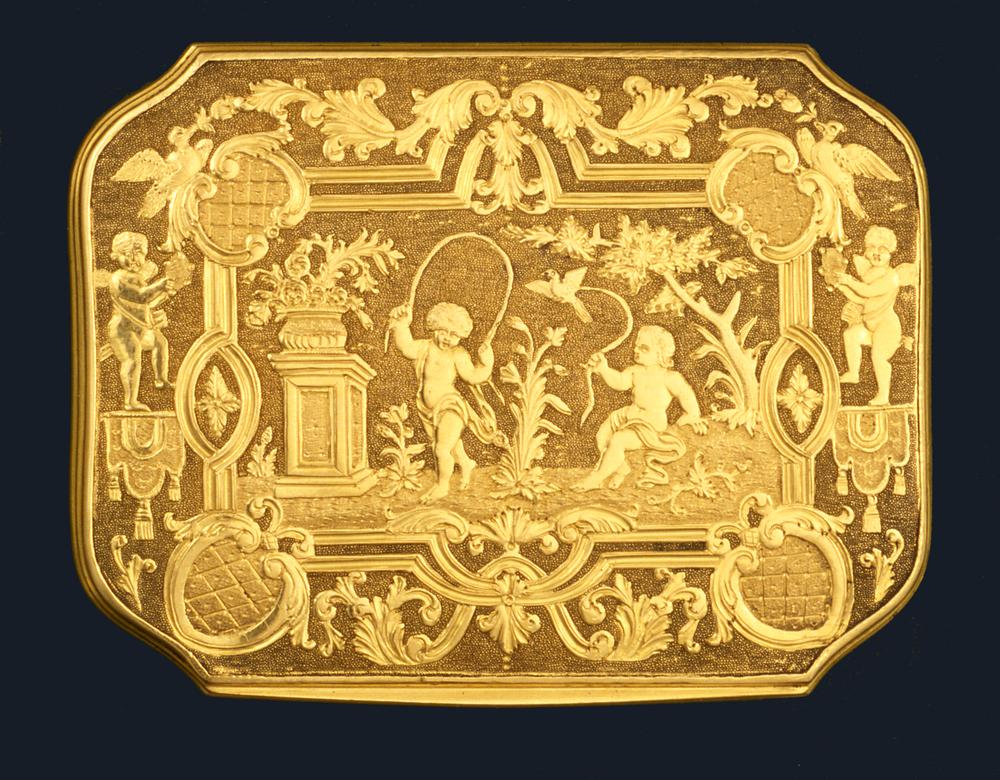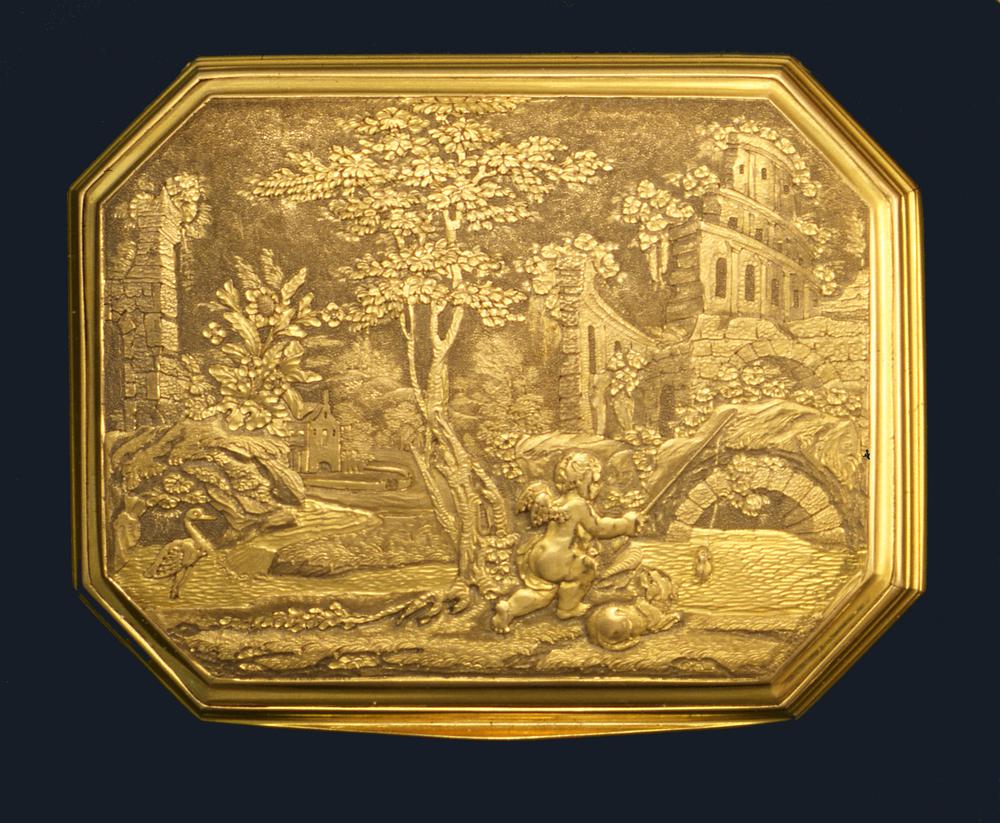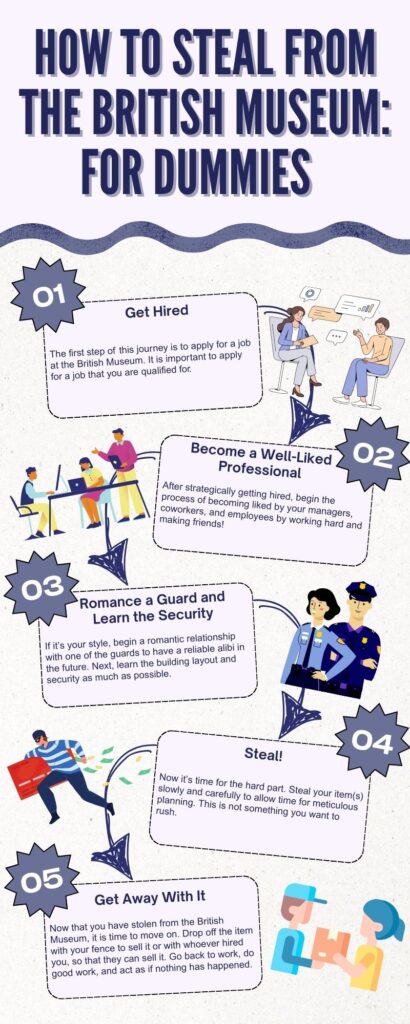Has stealing ever crossed your mind? Have you ever considered stealing something exciting like a work of art from a famous museum? Well, this might just be a good outlet for you.
The British Museum has roughly 8 million items in their collection; however, only about 80,000 items are on display at the same time. That means the other 7,920,000 are in collections. Many countries have requested those items for repatriation only to be denied by the museum. It is not hard to believe that the British Museum would not like it if someone stole some of their items and refused to give them back. Let’s dive in.
The Boxes

The first box is labeled “case” from an unknown artist from Germany between 1726 and 1775. It has an intricate gold and mother-of-pearl lid with a silk lining inside. One side of the box depicts a man with a flag in his right hand and a woman with a spear in her left hand; they are holding opposite hands.

The second gold box is labeled “box” from an unknown artist from England between 1720 and 1730. It has a delicately engraved lid depicting two cupids playing in a garden surrounded by winged cupids and birds.

The third gold box is labeled “box” from an unknown artist from England between 1740 and 1750. It has an engraved lid depicting a landscape scene and a cupid fishing.
Elite Europeans in the eighteenth century used boxes like these as containers for sweets or tobacco to show their status and good taste. They often gave them as luxury gifts that could convey secret meanings if displayed in specific ways. The widespread use of snuff boxes led to the creation of pockets in skirts and coats, as well as the implementation of handkerchiefs as an accessory, because of snuff-takers constant sneezing.

These gold boxes are all from the same collector, Anne Hull Grundy, who lived from 1926 to 1984. Mrs. Grundy was a well-known collector and art historian whose collection consisted mainly of Victorian jewelry. However, it also included miniature sculptures, metalwork, silver and gold items, medals, and ceramics.
Mrs. Grundy’s 1,200 piece donation “transformed the British Museum’s 17th-20th century European jewellery holdings at a stroke” (Gere & Rudoe 81). The boxes also all came from the same previous owner, S.J. Phillips Ltd., an auction house in London.
The following hypothetical plan to steal the three boxes is comprehensively based on research into art theft, the art market, museum security, and planned social interactions compelled by psychological studies.


The Plan
I am a recent graduate with a Masters in Museum Studies. I am contacted by the great grandsons of Solomon Joel Phillips, who are now running S.J. Phillips Ltd. They want me to become an employee at the British Museum to steal three gold boxes that they believe belong to them. As an employee at the museum, it will be much easier for me to steal these boxes without anyone noticing that something strange, like a break-in, has happened.
While they do not specify any further plans regarding the boxes, they offer me 80 percent of the value of the boxes once they have them. As a graduate with student loans, I know this is reckless, but I take the offer in desperation; I need a job and I have bills to pay.
The first step is to apply for the Assistant Collection Manager position at the British Museum, which I have ample experience for from my educational background.
The Hiring Process
I will ace my interviews by playing into gender stereotypes. Employers make gender-based assumptions during the hiring process and research has found that high-achieving women will not get called back as much as high-achieving men. It is statistically better for women to have moderate achievements in order to be hired, which is how I will present myself.
Another important stereotype is that attractive people have more desirable social traits, which is something that I believe I can use to my advantage during the hiring process and in the workplace.
In the Workplace
I will begin the process of becoming liked by my managers, coworkers, and employees by opening up slowly, laughing at people’s jokes, smiling, remembering names, going to social events, and making friends. I will also begin a romantic relationship with one of the guards.
One of the biggest setbacks to modern museum security is that staff are not thinking of security protocols everyday. I can use this to my advantage, because my coworkers will not be thinking of security and they will not suspect me. I will be able to get in and out due to my insider status, but I will need to learn the layout and security of the building before my theft.
After a respectable amount of time, I will take the gold boxes one by one on different days to warrant less suspicion.
Being Cautious
I can replace the boxes at the museum with boxes from thrift stores that are similar enough to reduce the risk of being discovered. By stealing on the days my guard is working, I have an alibi in a trusted person of the museum.
The Theft
I will remove the boxes using cotton, lint-free gloves and I will be familiar with my coworker’s actions, so that no one else is in the room. Each box is less than 3 inches long, so they will not be too large to smuggle out of the museum in a small bag.
After The Theft
I plan to have discrete drop offs with the Solomon’s, which will ensure that I am not in possession of the boxes for an extended period of time. Until they send me my cut of the profit, I will go back to work and act as if nothing has happened.
The Research
“80 percent of art thefts involve insiders or accomplices that execute the crime over a period of time while working or volunteering in the museum” (Michaud 32)
In 2014, Dr. Peter Higgs, a curator at the British Museum, began stealing and selling more than 1,800 items on Ebay. A buyer recognized some of the pieces from the British Museum, which eventually led to the museum removing Higgs from his position.
Unless someone is planning an upcoming exhibit, no one will be looking for these boxes. They are not on display for a current exhibit, which makes them easier to grab, and they are not in any catalogue available to the general public. These factors benefit the success of my theft immensely.
Today, gold boxes are being sold at auction houses, such as Sotheby’s and Christie’s.
In 2018, Christie’s held an auction for gold boxes that sold for up to $100,000 depending on the quality. The boxes were from the late eighteenth century to early nineteenth century, which is similar to the British Museum’s gold boxes.
In 2022, Sotheby’s held an auction for gold boxes from the eighteenth and nineteenth centuries. Sotheby’s estimated the value of the gold boxes to range from $7,000 to $50,000. Considering that my gold boxes are detailed and ornate, I believe that they will fall on the higher end of these estimates, if not higher.
The art market has been significantly changed since the rise of modern art crime, and it can and will affect the outcome of my crime in potentially unpredictable ways. While the illegal art market might not provide as much profit as the legal art market, each of these boxes are ornate, intricate, and beautiful, which would still result in a large amount of money, which I estimate to be around $200,000 or more, for me.
Works Cited
Atkinson, Colin, et al. “‘now that you mention it, museums probably are a target’: Museums, terrorism and security in the United Kingdom.” Museum Management and Curatorship, vol. 35, no. 2, 5 Nov. 2019, pp. 109–124, https://doi.org/10.1080/09647775.2019.1683881.
Fitz-Gibbon, Kate. “Dirty Details: British Museum Presses Case against Former Curator Peter Higgs – Cultural Property News.” Cultural Property News – Cultural Property News, 18 May 2024, https://culturalpropertynews.org/dirty-details-british-museum-presses-case-against-former-curator-peter-higg/.
Gere, Charlotte, and Judy Rudoe. “Knowledge, Money and Time: Anne Hull Grundy as a Collector of Victorian Jewellery.” The Journal of the Decorative Arts Society 1850 – the Present, no. 24, 2000, pp. 80–97. JSTOR, http://www.jstor.org/stable/41809299. Accessed 25 Feb. 2025.
Heilman, Madeline E. “Gender stereotypes and workplace bias.” Research in Organizational Behavior, vol. 32, Jan. 2012, pp. 113–135, https://doi.org/10.1016/j.riob.2012.11.003.
IFSEC Insider. “Protecting London #1: Safety and Security at The British Museum.” YouTube, YouTube, 2016, www.youtube.com/watch?v=ZN4LsFfikA8.
Kila, Joris, and Marc Balcells, editors. Cultural Property Crime : An Overview and Analysis on Contemporary Perspectives and Trends. 1st ed., Brill, 2015.
Michaud, Eric C. “Museum Security and the Thomas Crown Affair.” Journal of Physical Security, vol. 4, no. 1, Jan. 2010, pp. 31–35. EBSCOhost, research.ebsco.com/linkprocessor/plink?id=d045cf89-174c-34ff-8897-6782adb7f031.
Quadlin, Natasha. “The Mark of a Woman’s Record: Gender and Academic Performance in Hiring.” American Sociological Review, vol. 83, no. 2, 2018, pp. 331–60, https://doi.org/10.1177/0003122418762291.
Shortland, Anja, and Andrew Shortland. “Governance under the Shadow of the Law: Trading High Value Fine Art.” Public Choice, vol. 184, no. 1/2, 2020, pp. 157–74. JSTOR, https://www.jstor.org/stable/48733686. Accessed 25 Feb. 2025.
Snyder, Mark, et al. “Social Perception and Interpersonal Behavior: On the Self-Fulfilling Nature of Social Stereotypes.” Journal of Personality and Social Psychology, vol. 35, no. 9, 1977, pp. 656–66, https://doi.org/10.1037/0022-3514.35.9.656.
Sotheby’s. “Gold Boxes, Fabergé and Objects of Vertu.” Sothebys.Com, www.sothebys.com/en/digital-catalogues/gold-boxes-faberge-and-objects-of-vertu. Accessed 25 Feb. 2025.
The British Museum. “Box.” The British Museum. https://www.britishmuseum.org/collection/object/H_1978-1002-759.
The British Museum. “Box.” The British Museum. https://www.britishmuseum.org/collection/object/H_1978-1002-760.
The British Museum. “Case.” The British Museum. https://www.britishmuseum.org/collection/object/H_1978-1002-758.
Victoria and Albert Museum. “Gold Boxes · V&A.” Victoria and Albert Museum, www.vam.ac.uk/articles/gold-boxes?srsltid=AfmBOor5Y8xiiUslJabTG4EH6mZI8jFcuP1aqFI2WnCUE0kvNPbeDNnD. Accessed 25 Feb. 2025.